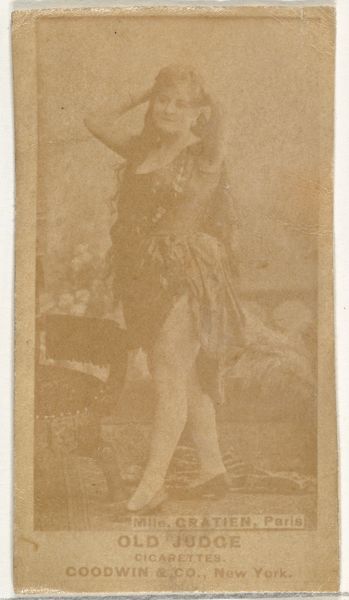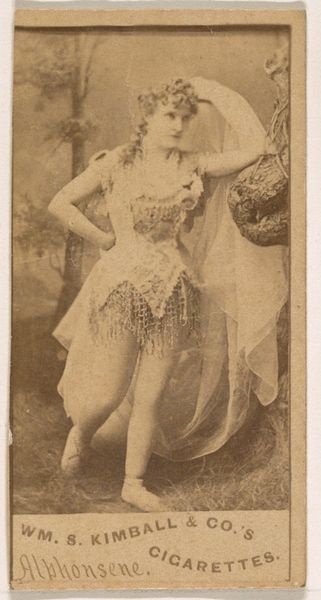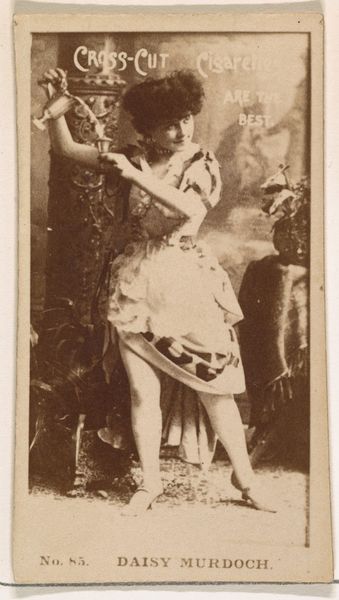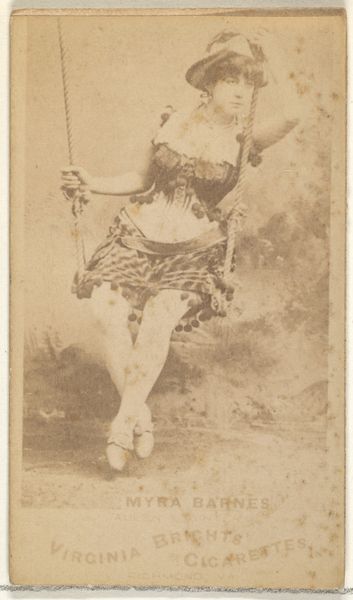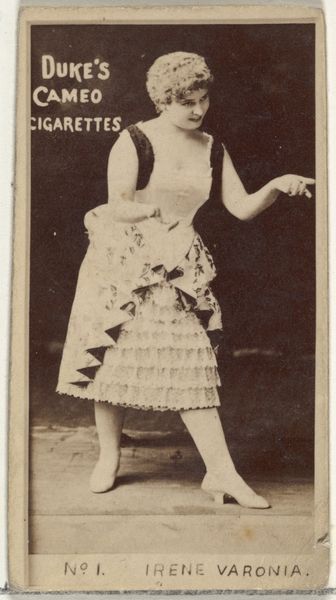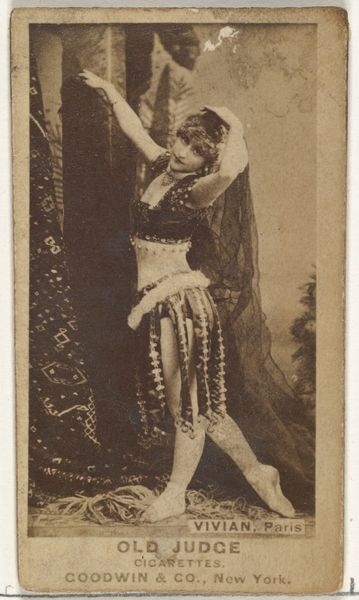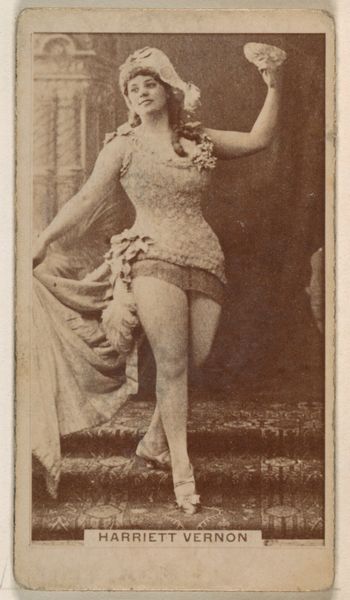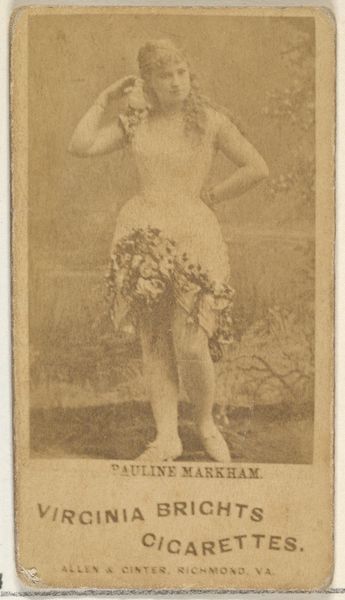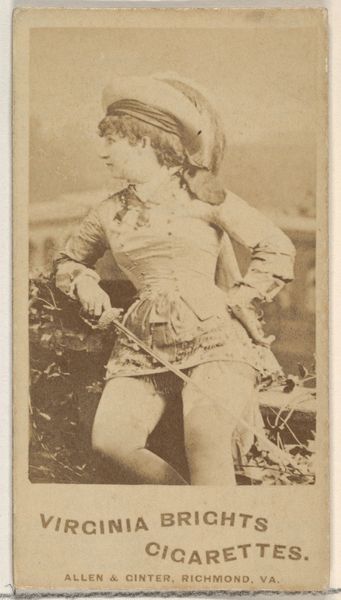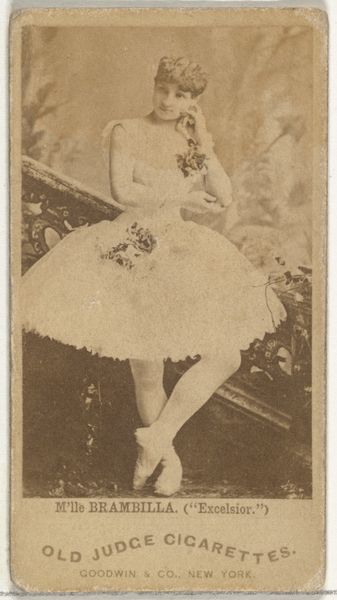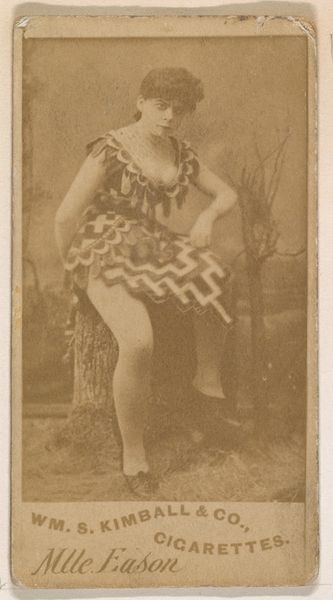
Card 453, Daisy Murdoch, from the Actors and Actresses series (N45, Type 1) for Virginia Brights Cigarettes 1885 - 1891
0:00
0:00
drawing, print, photography
#
portrait
#
drawing
# print
#
figuration
#
photography
#
genre-painting
Dimensions: Sheet: 2 3/4 x 1 3/8 in. (7 x 3.5 cm)
Copyright: Public Domain
Editor: This is Card 453, Daisy Murdoch, from the Actors and Actresses series made between 1885 and 1891 for Virginia Brights Cigarettes by Allen & Ginter. It’s a small photographic print, sepia-toned, showing an actress striking a pose. There’s something unsettling about its objectification and its use as advertisement. How do you interpret this work? Curator: This seemingly simple advertisement card speaks volumes about the intersection of gender, commerce, and celebrity in the late 19th century. Consider the societal pressures on women during that period, where their images were often commodified and circulated for male consumption. It's not merely a portrait, but a curated performance, reflecting the ideals of femininity marketed to consumers of Virginia Brights Cigarettes. How does that intersection strike you, given our current understanding of gender roles and marketing? Editor: I hadn’t thought of it that way. It's troubling how it normalizes objectification by associating it with everyday consumption, like cigarettes. The card becomes a symbol of a deeply unequal power dynamic. Curator: Precisely. And who profits from this dynamic? Understanding the context of Allen & Ginter, a prominent tobacco company in Richmond, Virginia, is also critical. Their use of "actresses" underscores a specific social construct, a performative womanhood for the male gaze. What narrative is being subtly pushed regarding identity and aspiration, don’t you think? Editor: The actress’s aspirational status, linked with the Virginia brand, creates a subtle push of cultural value where certain identities are seen as worthy of being promoted. Curator: It’s also worth examining the racial context of Richmond, Virginia, a former Confederate capital. Considering how race was intricately woven into capitalist structures during this period is central to me, revealing how this advertisement reinforces certain norms while simultaneously invisibilizing others. Editor: This reframing has totally changed how I see this image! It's not just a portrait, but a loaded artifact of a specific time and power structure. Curator: Exactly! Examining this through the lens of social power dynamics helps us see the complex messages embedded within even seemingly innocuous advertisements. Editor: Thanks, I learned how the social historical lens allows to have a conversation between art history and theory.
Comments
No comments
Be the first to comment and join the conversation on the ultimate creative platform.
